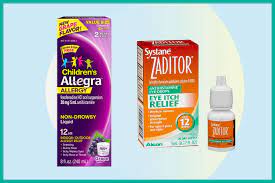What’s the best antihistamine for you?

When choosing the best antihistamine for you, it’s important to consider several factors including the type of allergies you have, the severity of symptoms, how often they occur, personal health conditions, potential side effects, and whether you prefer a non-drowsy formula.
Antihistamines can be broadly classified into two categories: first-generation (sedating) and second-generation (non-sedating or less sedating). First-generation antihistamines, such as diphenhydramine (Benadryl), can be very effective but often cause drowsiness and other side effects like dry mouth and eyes. These are usually taken at night to help prevent sleep disruption due to symptoms.
Second-generation antihistamines were developed to provide relief from allergy symptoms without causing as much drowsiness. Examples of second-generation antihistamines include cetirizine (Zyrtec), fexofenadine (Allegra), and loratadine (Claritin). They tend to last longer, have fewer side effects, and are generally taken once a day.
The best antihistamine for an individual is one that effectively manages their specific allergy symptoms while causing the fewest undesirable side effects. For many people with mild to moderate allergies, an over-the-counter second-generation antihistamine may be sufficient. However, for those with more severe allergies or additional health considerations, it might be necessary to consult with a healthcare provider for a prescription-strength medication or advice on combination therapies.
In summary, there isn’t a one-size-fits-all answer when it comes to the best antihistamine. It depends on personal symptoms, health profile, lifestyle needs, and sometimes even trial and error. Always consider consulting a healthcare professional before starting or changing any medication regimen.






